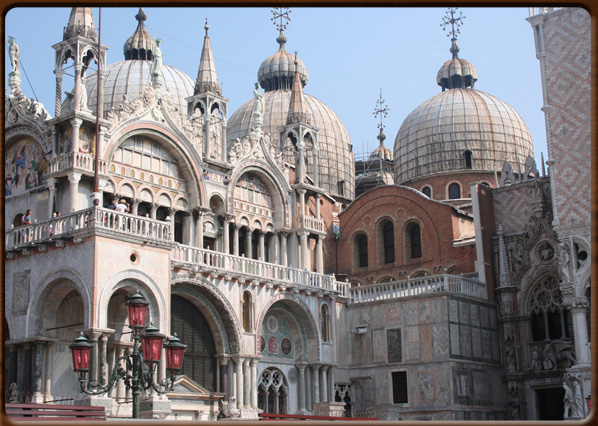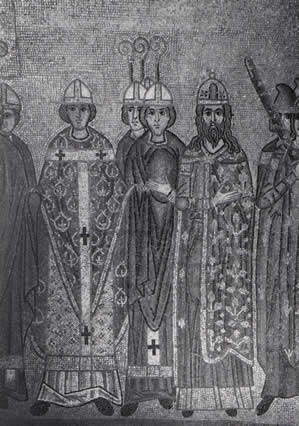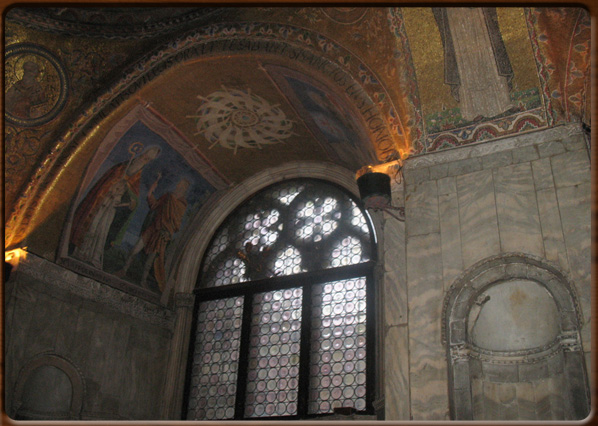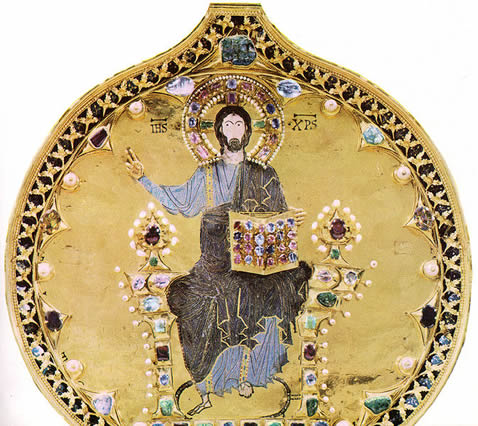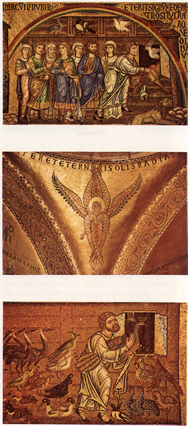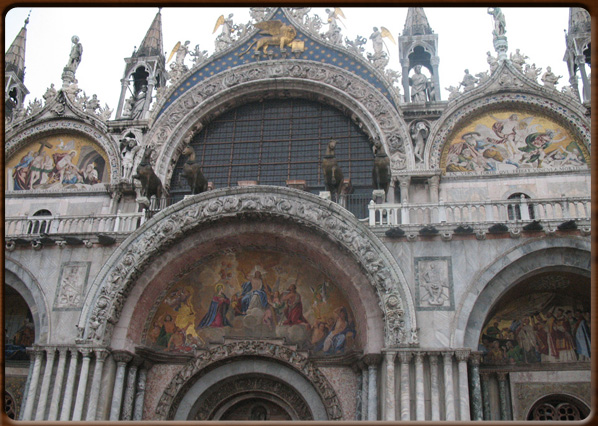St. Mark’s Basilica is the centre of religious and public life in the city.
This is where the Doges were blessed and is one of the main symbols of Venice and its history.
Founded in 829 to house the body of Mark the Evangelist, patron saint of the city, its complex and articulated structure reflects the various stages in its construction: an overlapping of primitive Romanesque-Byzantine elements and signs of
Gothic and sixteenth-century interventions.
Renovated several times, the
basilica has the typical profile of Byzantine churches, with a large central dome and hemispherical domes. Its appearance today is the result of interventions between the 11th and late 14th Centuries.
The façade, with its five deep entrance portals, is decorated with precious marble and mosaics and divided into two parts by a balcony now supporting replicas of the gilded copper Four Horses of St. Mark, the originals having been pillaged after the siege of Venice by Constantinople] in 1204.
A masterpiece of Gothic sculpture, the façade is a rich composition of columns, arches, spires and friezes that, as in all mediaeval churches, often portray characters, crafts or scenes from everyday life.
Inside, the space is organised as a classic Greek cross with massive columns supporting the domes overhead. However, these architectural details almost disappear from sight on account of the magnificence of the mosaics covering the interior.
The mosaics on a gold background decorating the upper walls and the domes form the main feature and value of the basilica: the work of Byzantine and Venetian masters in the 12th-14th Centuries, these mosaics were partially completed by other masters from the Venetian school in the 1500s to designs by Titian, Tintoretto e Veronese.
